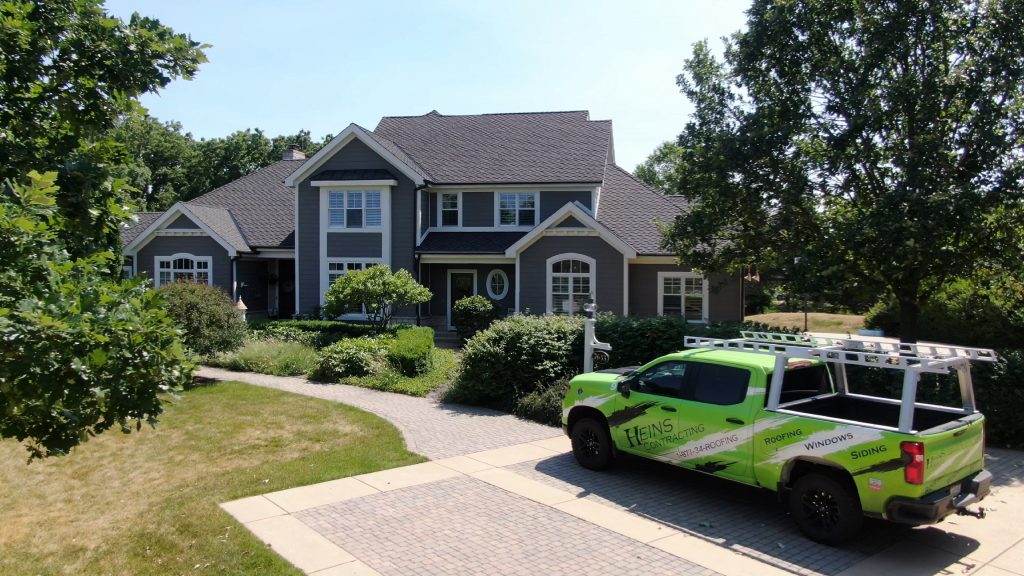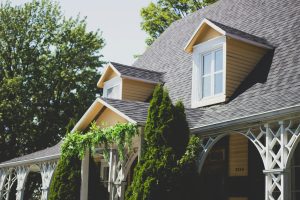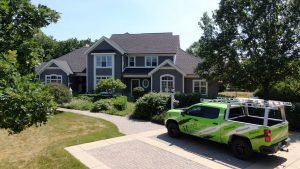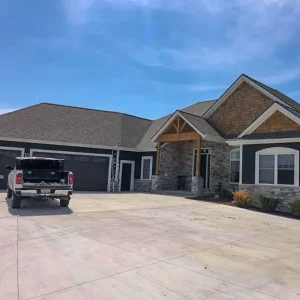If you’re trying to decide which window frame material makes the most sense for your home, you’re not alone. Homeowners across Wisconsin often ask the same question when it’s time to replace outdated windows: What’s actually worth the cost and hassle? You’re weighing upfront price, long-term durability, maintenance, and how it’ll all hold up through another brutal Midwest winter.
You’ll find plenty of opinions online, but many skip over the parts that matter when you live in a state with -20°F wind chills and summer storms that roll in without warning. We’ve installed hundreds of windows in homes from Belleville to Black Earth. So in this guide, we’ll walk you through what actually holds up here, including material lifespans, cost ranges, pros and cons of each, and what to watch out for before committing.
There’s no single best — only what fits your house and lifestyle
We’ve replaced warped wood frames on historic homes, rusted aluminum on mid-century ranches, and cracked vinyl on new construction gone wrong. The truth is, no window frame material wins in every category. For example, wood insulates well but requires regular maintenance. Vinyl’s budget-friendly, but not every brand can handle temperature swings. Aluminum can look sharp on modern homes, but it’s a heat conductor, not ideal for keeping your energy bills low.
Reality check: If your current windows sweat, leak, or sag in the middle, it’s not just the glass, the frame plays a bigger role than most people realize.
Warning: Don’t make a decision based solely on brochure photos or a single price quote. What works well in Arizona might fail quickly in Wisconsin.
Comparing the Core: Cost, Maintenance, and Lifespan
What vinyl frames offer (and where they fall short)
Vinyl frames are often the most affordable option, with replacement costs ranging from $400–$650 per window installed. They’re low-maintenance, resist moisture, and don’t require painting, great for busy households or rental properties.
But not all vinyl is created equal. Budget-grade vinyl can warp when temps swing from -10°F to 90°F, especially on south-facing walls. Well-made vinyl frames last 20–30 years, but flimsy ones degrade after 10.
Note: Check the frame thickness and chamber design inside the vinyl. Thicker walls typically hold up better over time.
Pro tip: Ask for vinyl options with welded corners and UV-resistant coatings. These small upgrades help them handle Wisconsin summers without fading or sagging.
Wood frames: Beautiful, but demanding
There’s no denying the charm of stained or painted wood frames, especially in historic neighborhoods. Wood has excellent natural insulation and a lifespan of 30–50 years when maintained. Installed cost? Usually between $700–$1,200 per window, depending on finish and custom sizing.
But wood demands attention. You’ll need to repaint or reseal every few years to prevent rot, especially around areas that get hit with snowdrift or summer rain.
Reality check: If your gutters overflow even once, water will find a way into unsealed wood frames. That’s when the rot starts, and often goes unnoticed until major damage sets in.
Warning: Avoid bare wood on any window near the ground or north-facing walls. These areas tend to stay damp longer, increasing mold and decay risk.
Aluminum: Durable, sleek… and cold?
Aluminum window frames hold up well against hail, wind, and time. They’re common in commercial buildings for a reason, they don’t warp or rot. Costs run $600–$950 per window, making them mid-range overall. They can last 30–40 years with little maintenance, aside from occasional sealing.
Here’s the downside: Aluminum conducts heat and cold easily. In winter, these frames can get cold enough to attract condensation and increase draftiness unless they’re built with a thermal break, a special barrier layer inside the metal.
Note: Ask if your aluminum window choice includes a thermal break. Older models (especially pre-2000s) usually don’t, and that makes a big difference in energy performance.
Pro tip: If you’re replacing windows in a detached garage or three-season porch, aluminum can be a solid choice. It’s strong, holds shape well, and works fine in non-living spaces.
What Wisconsin Weather Does to Window Frames
From ice dams to intense UV: It’s not just about temperature
Winter wind chills, freeze-thaw cycles, and pounding summer sun all test window frame materials in different ways. Vinyl expands and contracts more than aluminum, which can lead to loosening seals over time. Wood absorbs moisture, which can swell the frame in humid conditions, especially in older homes without updated flashing.
Reality check: A single year of Wisconsin weather can age a cheap window frame like five years elsewhere. That’s why our installs always consider slope angle, exterior exposure, and even nearby trees that drip sap or shade key spots.
Note: Homeowners near lakes or riverfronts might need extra protection against moisture intrusion and mold in wood frames.
Aluminum frames and frost lines
Aluminum doesn’t just let in cold, it becomes cold. That makes it risky in bedrooms or bathrooms unless paired with upgraded insulated glass and weather stripping.
Hidden Costs and Timeline Realities
Initial cost is only part of the equation
Let’s say you save $200 per window choosing entry-level vinyl. But if you need to replace them again in 12 years instead of 25, that savings disappears fast. Installation for a full home (10–15 windows) typically runs $6,000–$18,000, depending on material, size, and trim work.
DIY install? Only in very specific cases
Replacing your own window frames sounds tempting, and yes, it’s legal in Wisconsin, but poor flashing or incorrect caulking can lead to water infiltration that doesn’t show up until damage is done. Most pros, including our team, need 1–2 hours per window, and the job typically spans 2–4 days for a full replacement.
Warning: Improper installs void most manufacturer warranties. Always ask about this before hiring or doing it yourself.
FAQs: What People Ask Before Choosing a Frame Type
What window frame material lasts the longest?
Wood can outlast vinyl and aluminum if maintained properly, often surviving 50+ years. But it requires more upkeep. Aluminum and vinyl last 25–35 years on average, depending on climate and quality.
Which frame type is most energy-efficient?
Wood is the best insulator naturally, but high-end vinyl frames with foam-filled chambers and Low-E glass can come close. Aluminum performs the worst unless it includes a thermal break.
How do I know if it’s time to replace the whole frame?
Signs like frame warping, seal failure (foggy glass), or stuck sashes often mean full-frame replacement. Expect frame replacement to cost 25–40% more than just a sash swap.
Are there frame materials better suited for historic homes?
Wood is often required by local ordinances in historic districts, especially for street-facing windows. Some fiberglass and clad-wood options meet visual standards while improving performance.
Plan Smart Before You Replace Windows This Year
A window frame choice isn’t just about the material, it’s about how that material interacts with your home, your habits, and your climate. Timing matters, too. Spring and early fall are ideal for installations in Wisconsin, avoiding the bitter cold and peak storm season.
We’ve helped Wisconsin homeowners make these decisions for over a decade, and we’ve seen how frame material plays a role in both energy bills and long-term maintenance. If you’re unsure what fits your home best, a site visit makes all the difference.
Ready to narrow it down? Let’s look at your windows — not a catalog
No online chart or checklist can tell you what your house really needs, not without seeing the siding, insulation, and sun exposure firsthand. We’ll walk you through the frame options that make sense for your situation, and we’ll point out what’s worth upgrading (and what isn’t). No push, no pitch, just straight advice based on real installs we’ve done in homes like yours.




